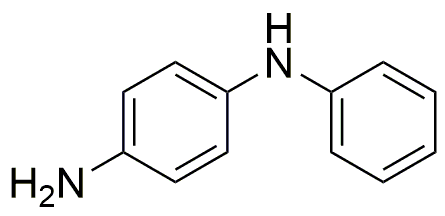Azoic diazo component 22 is widely utilized in research focused on:
- Dyes and Pigments: This compound is essential in the textile industry for producing vibrant azo dyes, which are known for their excellent colorfastness and stability. It allows manufacturers to create a wide range of colors for fabrics.
- Polymer Chemistry: In the production of polymers, it serves as a coupling agent, enhancing the properties of plastics and resins. This application is crucial for industries that require durable and high-performance materials.
- Pharmaceuticals: It plays a role in synthesizing various pharmaceutical compounds, contributing to the development of medications. Its versatility in chemical reactions makes it valuable for researchers in drug discovery.
- Analytical Chemistry: Azoic diazo component 22 is used in analytical methods for detecting and quantifying specific substances. This application is vital for quality control in various industries, ensuring product safety and compliance.
- Cosmetics: The compound is also found in cosmetic formulations, where it serves as a colorant. Its stability and safety profile make it suitable for use in products like lipsticks and nail polishes.
General Information
Properties
Safety and Regulations
Applications
Azoic diazo component 22 is widely utilized in research focused on:
- Dyes and Pigments: This compound is essential in the textile industry for producing vibrant azo dyes, which are known for their excellent colorfastness and stability. It allows manufacturers to create a wide range of colors for fabrics.
- Polymer Chemistry: In the production of polymers, it serves as a coupling agent, enhancing the properties of plastics and resins. This application is crucial for industries that require durable and high-performance materials.
- Pharmaceuticals: It plays a role in synthesizing various pharmaceutical compounds, contributing to the development of medications. Its versatility in chemical reactions makes it valuable for researchers in drug discovery.
- Analytical Chemistry: Azoic diazo component 22 is used in analytical methods for detecting and quantifying specific substances. This application is vital for quality control in various industries, ensuring product safety and compliance.
- Cosmetics: The compound is also found in cosmetic formulations, where it serves as a colorant. Its stability and safety profile make it suitable for use in products like lipsticks and nail polishes.
Documents
Safety Data Sheets (SDS)
The SDS provides comprehensive safety information on handling, storage, and disposal of the product.
Product Specification (PS)
The PS provides a comprehensive breakdown of the product’s properties, including chemical composition, physical state, purity, and storage requirements. It also details acceptable quality ranges and the product's intended applications.
Certificates of Analysis (COA)
Search for Certificates of Analysis (COA) by entering the products Lot Number. Lot and Batch Numbers can be found on a product’s label following the words ‘Lot’ or ‘Batch’.
*Catalog Number
*Lot Number
Certificates Of Origin (COO)
This COO confirms the country where the product was manufactured, and also details the materials and components used in it and whether it is derived from natural, synthetic, or other specific sources. This certificate may be required for customs, trade, and regulatory compliance.
*Catalog Number
*Lot Number
Safety Data Sheets (SDS)
The SDS provides comprehensive safety information on handling, storage, and disposal of the product.
DownloadProduct Specification (PS)
The PS provides a comprehensive breakdown of the product’s properties, including chemical composition, physical state, purity, and storage requirements. It also details acceptable quality ranges and the product's intended applications.
DownloadCertificates of Analysis (COA)
Search for Certificates of Analysis (COA) by entering the products Lot Number. Lot and Batch Numbers can be found on a product’s label following the words ‘Lot’ or ‘Batch’.
*Catalog Number
*Lot Number
Certificates Of Origin (COO)
This COO confirms the country where the product was manufactured, and also details the materials and components used in it and whether it is derived from natural, synthetic, or other specific sources. This certificate may be required for customs, trade, and regulatory compliance.


